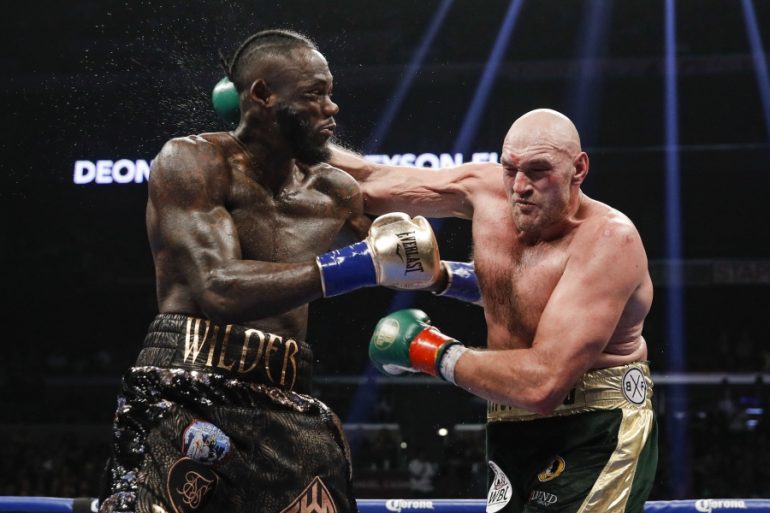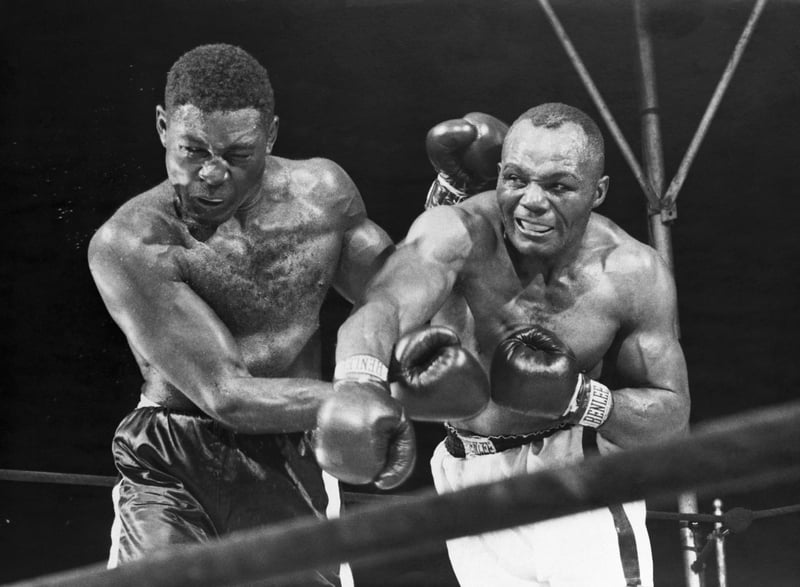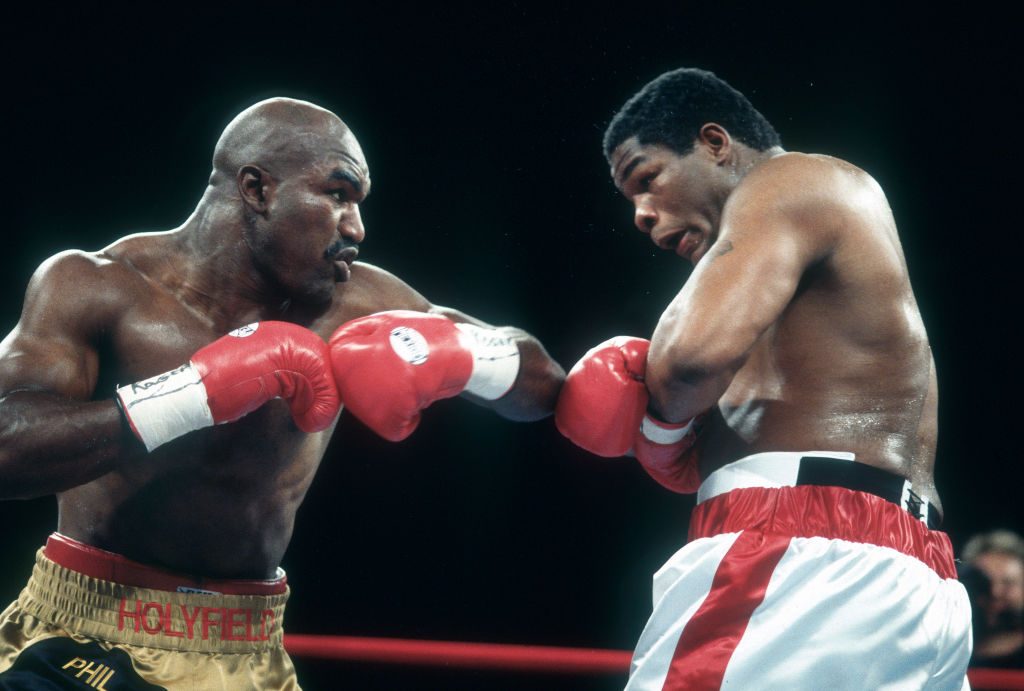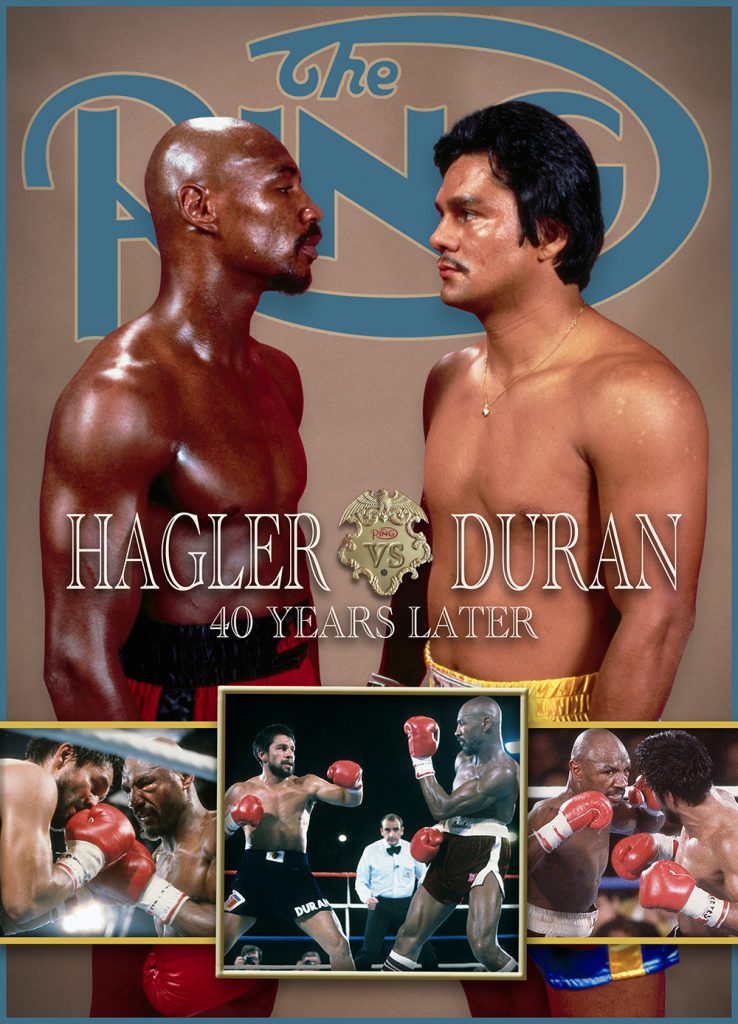Tyson Fury, Deontay Wilder and the great glamour division trilogies

Spectacular action, controversy and the downright bizarre have been hallmarks of boxing history’s greatest heavyweight trilogies.
Tyson Fury, The Ring Magazine and WBC titleholder, and Deontay Wilder have already provided all of this and more – and we still have one fight left to go. This Saturday will see the pair complete their own trilogy at the T-Mobile Arena in Las Vegas.
In their first fight, which took place at the Staples Center in LA on December 1, 2018, it was Wilder who provided the spectacular. After being outboxed for most of the contest, “The Bronze Bomber” landed a ferocious two-punch combination that dropped Fury hard in the 12th and final round. Incredibly, the Englishman found his feet and fought back hard until the final bell.
The controversy emerged when the official scorecards for that bout were announced. A fight that almost all fans and experts scored in favor of Fury was declared a split decision draw and the subsequent scrutiny surrounding that verdict set the stage for an inevitable return fight.
The second chapter, which took place at the MGM Grand in Las Vegas on February 22, 2020, could scarcely have been more different from the first. “The Gypsy King” dominated from start to finish, dropping the American twice and closing out with a brutal two-fisted assault in the seventh round. Wilder’s corner threw in the towel to save their man from further damage and that certainly looked to be the smart choice.
The bizarre occurred following Fury’s triumph. With his championship pride clearly hurt, Wilder let loose with a string of excuses for the first setback of his professional career. His entrance costume was too heavy and weakened his legs. Wilder claimed that his water was spiked. Next it was biased officiating by referee Kenny Bayless. Trainer Mark Breland, who saved his fighter for another day, was accused of betrayal. We’re almost done. Wilder also stated that something resembling egg weights were loaded into Fury’s gloves. And finally the ex-champ said he suffered an injured bicep during training camp.
What will we get when the pair renew ties this weekend? Time will tell, but five great trilogies in heavyweight history have provided action-packed narratives of their own, and there’s been the odd controversial turn and bizarre twist. We now look back at those epic rivalries from years gone by. Incidentally, if you’re looking for Evander Holyfield versus John Ruiz, I’m afraid that one didn’t make the cut.
WALCOTT VS. CHARLES

Walcott attacks Charles in fight three. Photo by Bettmann/ Getty Images
Fight 1: June 22, 1949/ Comiskey Park, Chicago
Fight 2: March 7, 1951/ Olympia Stadium, Detroit
Fight 3: July 18, 1951/ Forbes Field, Pittsburgh
Fight 4: June 5, 1952/ Municipal Stadium, Philadelphia
OK, there were four fights, not three, but it was a trilogy at one point. Bottom line: This rivalry cannot be ignored.
When then-champion Joe Louis retired on March 1, 1949, his former rival Jersey Joe Walcott and light heavyweight legend Ezzard Charles were matched for the vacant crown.
In reality, Walcott should have already been champion following a sensational performance against Louis in December 1947. “Jersey Joe” floored “The Brown Bomber” twice in that bout and came out on the wrong end of a 15-round split decision. Louis, the rematch king, knocked out Walcott in the return, six months later.
Despite never contesting the championship, Charles is perhaps the greatest light heavyweight that has ever lived. Why? He held three wins over Archie Moore, three wins over Joey Maxim, two wins over Jimmy Bivens and two wins over Lloyd Marshall. That is insane.
Remarkably, Charles retained that elite-level class as a heavyweight, scoring a wide unanimous decision over Walcott in their first encounter.
Nine months later, “The Cincinnati Cobra” scored another unanimous decision and dropped his foe with a great left hook in Round 9.
But one of the greatest left hooks of all time was yet to come.
In their third meeting, Charles was boxing brilliantly once again and another points win looked assured. However, in Round 7, after coming out of a clinch, Walcott marched forward purposefully and looked for his opponent to lead. Charles launched a quick jab, but Walcott slipped the punch perfectly and connected on an explosive left hook counter that knocked his opponent out cold.
This third chapter was voted Ring Magazine Fight of the Year.
With the championship finally his and momentum on his side, Walcott managed to outpoint Charles in a very close fourth encounter, evening up the series at 2-2.
PATTERSON VS. JOHANSSON

Patterson and Johansson in Fight 3. Photo by The Ring Magazine/Getty Images
Fight 1: June 26, 1959/ Yankee Stadium, The Bronx
Fight 2: June 20, 1960/ Polo Grounds, New York
Fight 3: March 13, 1961/ Convention Center, Miami
All Floyd Patterson had to do was avoid Ingemar Johansson’s famed right-hand shot and victory would be his, but that proved to be easier said than done.
In the fifth defense of his title, Patterson was subjected to one of the most destructive and embarrassing beatdowns in heavyweight history. Despite entering the bout as the No. 1 challenger, Johansson was a 5-1 underdog. However, when the Swedish star connected with “Ingo’s Bingo” in the opening seconds of Round 3, all betting odds went out the window. Six more knockdowns followed in that session and Europe had its first heavyweight champion since Primo Carnera 25 years earlier.
Patterson was oozing motivation ahead of the rematch. If cold revenge wasn’t enough, the shy and retiring New Yorker was aiming to become the first fighter ever to regain the heavyweight championship. He trained accordingly and turned in a ferocious performance. Johansson briefly stunned his man with a right in Round 2, but Patterson was too good. A leaping left hook decked the champ for a nine count in Round 5, and, moments later, Patterson followed a sharp hook to the body with another massive left to the jaw that knocked the Swedish fighter out cold. There were anxious moments at ringside as Johansson’s left foot twitched and blood poured from his mouth and nose.
Patterson’s glorious vindication would be named Fight of the Year.
Patterson-Johansson 3 was a natural and took place nine months later. Given the vicious knockout he’d endured in Fight 2, Johansson could have been forgiven for exercising caution. However, with just a minute gone in Round 1, the former champ decked Patterson with a thumping right-hand counter. Moments later, Patterson stumbled to the canvas following a two-punch combination and it looked like boxing would crown it’s second two-time heavyweight champion in as many fights.
Boom!
Patterson was dangerous under fire and before those three minutes were over, he’d floored his rival with a stiff left hook to the head. This mini-comeback was so impressive that the session earned Ring Magazine Round of the Year honors. Patterson now had the momentum and was largely dominant before closing the show with a three-punch salvo in Round 6.
ALI VS. FRAZIER

Ali and Frazier in their third and most brutal fight. Photo by Nik Wheeler/Corbis via Getty Images
Fight 1: March 8, 1971/ Madison Square Garden
Fight 2: January 28, 1974/ Madison Square Garden
Fight 3: October 1, 1975/ Araneta Coliseum, Quezon City, Philippines
The most famous heavyweight trilogy of them all.
Joe Frazier was first touted as a challenger for Muhammad Ali’s championship in 1967, by which point Philadelphia’s left-hook destroyer had broken into The Ring’s Top 10. However, Ali’s refusal to be drafted on religious grounds would lead to a three-and-a-half-year exile, during which time Frazier picked up the heavyweight pieces.
Their first encounter was “The Fight of the Century” and that was not hyperbole. Both men were unbeaten, carrying a combined record of 57-0 (46 knockouts), and both had legitimate claims to the heavyweight championship of the world. Frazier was universally accepted as undisputed champion, whereas Ali had never lost his title in the ring.
Ali got off to a great start, peppering his man with the jab and a dazzling array of combinations. However, every once in a while, Frazier would land his signature left hook to body or head and cause serious damage. As the rounds passed, those moments became more regular and Ali was a sitting duck for a ferocious body attack,
“The Greatest” was hurt badly in the 11th and floored with a left hook from hell in the 15th. For years, Ali disputed the unanimous decision that went against him, but, on this night, Frazier proved himself the better man.
The second fight is criminally underrated. By this point, Frazier had lost his title in devastating fashion to George Foreman (TKO 2), and he’d looked way below par in a close decision win over quick-fisted Brit Joe Bugner. In the meantime, Ali had gone 12-1 since the first Frazier fight; he was sharper, and his stamina had unquestionably improved.
The form guide played out in Superfight 2.
Ali scored easier and more often than he had three years earlier, and while Frazier had success, his rival’s movement, handspeed and well-timed clinches limited the Philly warrior’s offence. Some of the action was terrific and Ali claimed a well-earned 12-round unanimous decision.
Nine months after his revenge win over Frazier, Ali scored his most famous triumph, an eighth-round knockout of Foreman in “The Rumble in the Jungle.” Following three title defenses, the champion decided to break the deadlock against his bitter rival in “The Thrilla in Manila.”
Neither man was ever the same after this fight. Ali no longer had the legs to get himself out of the way and Frazier could no longer execute his bob-and-wave style with the same efficiency. This resulted in both fighters taking inhuman amounts of punishment in searing heat from beginning to end. Frazier’s left eye was almost completely closed at the end of 14 rounds and his vision in the right eye had deteriorated due to cataracts. Ali scored at will during the championship rounds and trainer Eddie Futch would not allow Frazier to come out for the 15th round.
Chapters 1 and 3 were voted Ring Magazine Fight of the Year.
ALI VS. NORTON

Ali and Norton in their third bout. Photo courtesy of Bettmann/ Getty Images
Fight 1: March 31, 1973/ Sports Arena, San Diego
Fight 2: September 10, 1973/ Forum, Inglewood
Fight 3: September 28, 1976/ Yankee Stadium
Sandwiched between his first two meetings with “Smokin’” Joe, Ali had begun an unlikely rivalry with ex-Marine and former Frazier sparring partner Ken Norton. If you were being charitable, Norton was viewed as a stay-busy opponent for Ali in their first encounter, but if you were being cynical, it was an unforgivable mismatch.
Following his defeat to Frazier, Ali took part in a series of fights with ranked contenders, at home and abroad, that would keep him sharp and increase public demand for a rematch. Everything was going to plan until the unheralded Norton tore up the script.
Ali sustained a broken jaw in Fight 1, although when that injury occurred has been a subject of great debate over the years. Norton always maintained that the damage was caused in the 12th and final round, whereas the Ali camp insisted that it happened in Round 2. Regardless, Norton fought the fight of his life and scored a split decision that should have been unanimous.
Desperate to avenge this stunning loss, Ali whipped himself into excellent fighting shape for the return. The ex-champ was only a pound and a half heavier than he’d been for the first Sonny Liston bout, nine years earlier, and his mood was serious throughout the buildup. Norton, however, remained a major problem. The Adonis-like Californian could match The Greatest’s jab, and Ali didn’t have the punching power to keep him off. This time it was Ali that claimed the split decision win.
The first two Ali-Norton bouts were non-title affairs, but the rubber match was for the championship, which was now held by Ali. Loaded with confidence following stoppage triumphs over Foreman and Frazier, the 34-year-old champion was obsessed with scoring a knockout win over his most stylistically troublesome opponent. “Norton must fall,” bellowed Ali when he entered the ring
But Norton was going nowhere.
The challenger won the majority of the early rounds; punched holes through Ali’s rope-a-dope routine and built up a commanding lead. The tide did turn at the midway point and Norton was certainly guilty of taking his foot of the gas. Ali knew how to win rounds and impress the judges, but the unanimous decision he received is still viewed as one of the most contentious verdicts in heavyweight boxing history.
Many fans and experts feel that Norton won all three fights in the series.
HOLYFIELD VS. BOWE

Holyfield and Bowe for the third time. Photo by Focus on Sport/ Getty Images
Fight 1: November 13, 1992/ Thomas & Mack Center, Las Vegas
Fight 2: November 6, 1993/ Caesars Palace, Las Vegas
Fight 3: November 4, 1995/ Caesars Palace, Las Vegas
No matter how much Evander Holyfield proved himself a winner, he just could not make the public forget about Mike Tyson.
“The Real Deal” became undisputed cruiserweight champion and then made history by becoming undisputed heavyweight champion. Unbeaten, he was largely dominant in title defenses, but beating up on aging legends like George Foreman and Larry Holmes did little for his reputation.
Suddenly a new force emerged.
Olympic silver medalist Riddick Bowe was big, young and highly regarded. Trained by legendary coach Eddie Futch, who Bowe referred to lovingly as “Papa Smurf,” the Brooklyn native was unbeaten in 31 fights with 28 knockouts.
The first fight was one of the greatest heavyweight championship fights of all time and yet another Ring Magazine Fight of the Year. Holyfield, 205 pounds, elected to fight fire with fire against the much bigger Bowe, 235, and the pair produced some of the most electrifying action ever seen in a boxing ring.
Bowe was already in a comfortable lead when he hurt Holyfield badly with a brutal right uppercut in Round 10. The challenger went all out for the finish, but the horrific punishment he inflicted only summoned the will and inner fortitude of the man he was facing. Utilizing incredible powers of recovery, Holyfield began throwing bombs of his own and stopped Bowe dead in his tracks. It was a remarkable three minutes and the Ring Magazine Round of the Year. Bowe regrouped and decked Holyfield in the 11th on his way to a deserved and unforgettable unanimous decision win.
The pair met again the following year in a fight that’s remembered for the wrong reason. Fan Man, aka James Miller, gatecrashed the ring with a motorized parachute contraption in Round 7 and created a 20-minute delay in the bout. Holyfield, however, boxed a brilliant, disciplined fight, and earned himself a 12-round unanimous decision win.
By the time the pair met for the rubber match, both were considered past their best. After becoming only the fourth man in history to regain the heavyweight title, Holyfield had lost it immediately and unexpectedly to southpaw Michael Moorer and temporarily retired from the sport with what was believed to be a heart condition. Bowe, meanwhile, was unable to recapture the form that took him to the championship.
Fight three was brutal. Despite Holyfield being able to get Bowe off his feet for the first time in the trilogy in Round 6, he was clearly ailing and Bowe finished him off with a thumping right hand in the eighth.
Ironically, Holyfield would produce more miracles following this trilogy, whereas Bowe was all but finished.
YOU MAY HAVE MISSED
TYSON FURY: I’M JUST GOING TO OBLITERATE WILDER NICE AND EARLY
DEONTAY WILDER CLAIMS TO BE REJUVENATED AHEAD OF FURY TRILOGY BOUT
FIGHT PICKS: FURY VS. WILDER 3
Tom Gray is Managing Editor for Ring Magazine. Follow him on Twitter: @Tom_Gray_Boxing
SUBSCRIBE NOW (CLICK HERE - JUST $1.99 PER MONTH) TO READ THE LATEST ISSUE
















